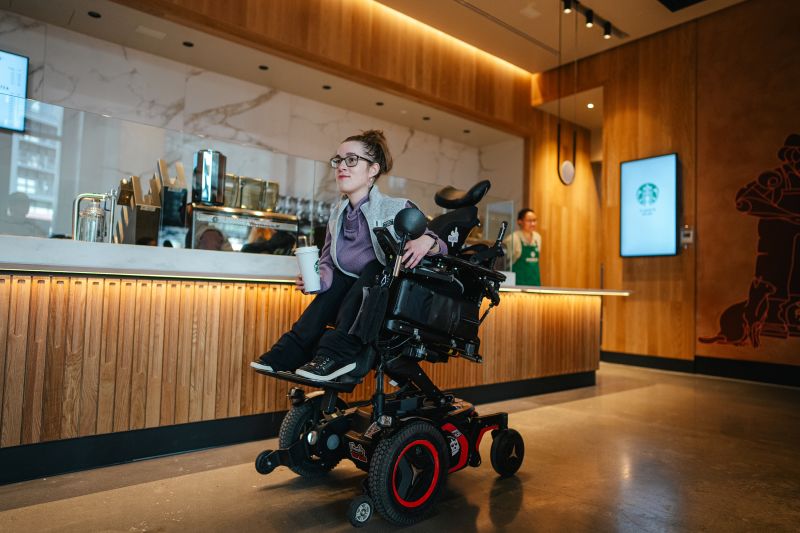
Starbucks Unveils Innovative Cafe Design for Enhanced Accessibility

Starbucks introduces a groundbreaking new cafe design focused on enhancing accessibility for all customers, particularly those with disabilities. From lighting adjustments to streamlined layouts, the coffee giant is setting a new standard for inclusive retail spaces.
Inclusive Cafe Experience
Starbucks has unveiled a revolutionary cafe design aimed at providing a more accessible and inclusive store experience for all customers, with a special focus on those with disabilities. The company's latest initiative showcases a commitment to creating retail spaces that cater to diverse needs and preferences.
A remodeled Starbucks at Union Market location in Washington, DC.
This innovative approach includes a range of features designed to enhance the overall cafe experience. Customers will notice softer indoor lighting that minimizes glare and shadow patterns, making it easier to read menu items and navigate the store. Acoustics have also been taken into consideration, with materials selected to reduce background noise and echoes, ensuring a comfortable environment for individuals using hearing aids.
Moreover, Starbucks is reimagining the traditional cafe layout to prioritize accessibility. The new design includes unobstructed pedestrian paths for seamless navigation, catering to customers using wheelchairs or motorized scooters. Counters have been lowered to accommodate wheelchair access and improve communication between staff and customers, reflecting the company's dedication to inclusivity in every aspect of the cafe experience.
Retail Inclusivity Movement
The shift towards more inclusive retail spaces has gained momentum in recent years, spurred in part by the challenges posed by the COVID-19 pandemic. Retailers are increasingly considering the diverse needs of their customers, with a focus on creating welcoming environments for individuals with disabilities and other specific requirements.
Initiatives such as 'sensory-friendly' store hours and enhanced accessibility features are becoming more prevalent across the retail industry. Companies like Walmart have introduced measures to reduce sensory overload and provide a more inclusive shopping experience for neurodiverse individuals. Starbucks' commitment to inclusive design sets a new standard for retail spaces, inspiring other businesses to prioritize accessibility and inclusivity in their establishments.
Advancing Accessibility Beyond Compliance
While legal requirements like the Americans with Disabilities Act (ADA) set standards for accessibility, achieving true inclusivity in retail spaces remains a challenge. Starbucks' proactive approach to inclusivity goes beyond basic compliance, aiming to create environments that go above and beyond regulatory mandates.
By open-sourcing its inclusivity framework and sharing resources with the retail industry, Starbucks is leading the way in expanding accessibility across the sector. The company's 'Retail Checklist' provides a roadmap for designing inclusive spaces that exceed ADA requirements, setting a new benchmark for retail inclusivity.
Starbucks' commitment to accessibility extends to its digital environments as well, with a goal to elevate the standard of accessibility by 2030. The company's advocacy for policy changes, such as fair wages for disabled workers, demonstrates a holistic approach to promoting inclusivity and equality in both physical and digital spaces.














